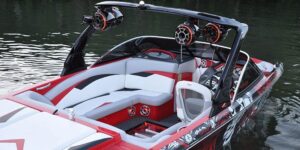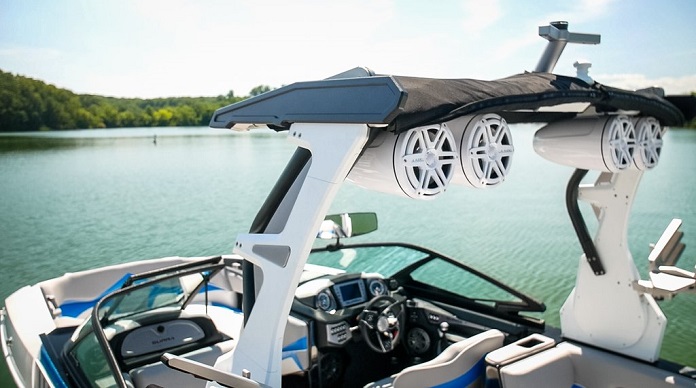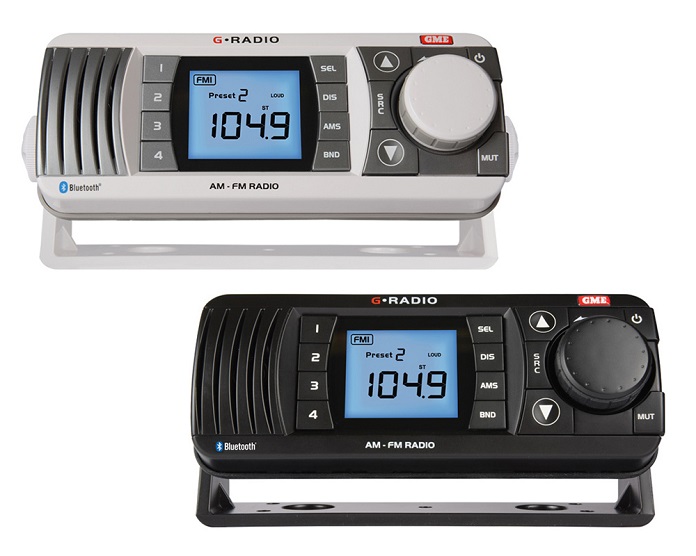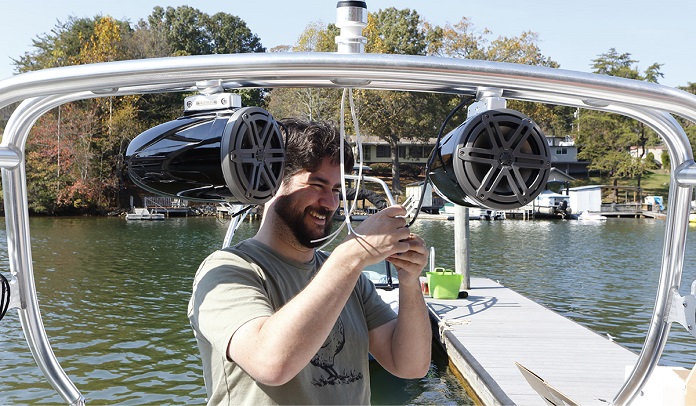
The sun, water and salt that make spending time at sea fun and enjoyable can be harsh on your boat’s electrical parts. If your boat’s equipment isn’t specifically designed to withstand the harsh environment, it won’t last more than a few trips. That’s why it’s important to choose the right equipment for your boat, and despite what you may think, that also goes for your audio system too.
From your cables to CD receiver, everything needs to be suitable for life on sea. A boat radio, unlike a radio that lives in the interior of your car, needs to be capable of withstanding the open sea climate. Further, boat radios go through a lot of extensive testing to ensure they’re up to the task. That being said, there are three essential things you’ll need to consider when comparing the different boat radios available today.

- Water Resistance – Your boat radio should be at least water-resistant. Being water-resistant means it can handle light rain and splashes. But ideally, you should pick a Bluetooth boat radio that’s waterproof, meaning it can be fully submerged without damage. Note that the water resistance levels for different gadgets can vary from manufacturer to manufacturer.
- UV Resistance – The radio should also be capable of withstanding prolonged exposure to the sun’s rays. It’s a crucial feature to look for in your speaker cones, remote controls and receiver faceplates.
- Corrosion Resistance – Saltwater can quickly ruin your equipment, which is why radios made for marine use are usually specifically designed to resist corrosion and rust by having the circuit boards, plated connections and chassis components coated with an extra layer for rust and corrosion resistance.
What to Look for in a Boat Radio?
The Specs

Obviously, the better the specs are on the audio equipment, the better it will sound. Some of the important specs to look out for include high CD signal-to-noise ratio for the receivers, a decent amount of RMS power, a few USB ports and wide frequency response. If you enjoy listening to the local radio stations, check the FM sensitivity spec. The FM sensitivity should be as low as possible. As for the speakers, make sure they have weatherproof cones, UV-resistant grilles, rubber surrounds and a decent amount of power handling.
High Power
Unlike listening to music inside your vehicle, your boat isn’t acoustically confined, so you’ll need a high-power radio for a clear, clean sound. Most boat receivers feature built-in 4-way amplifiers, but if you want even more sound, you can also add an external marine amplifier to your sound system.
The Features
Gone are the days of basic CD player radios. Today’s boat receivers are feature-packed, just like their car counterparts. A bluetooth boat radio is considered a must for most people, allowing you to connect your phone and play your favourite music from Spotify or Apple Music without having to deal with a cable. Multiple aux and USB connections can also come in handy if you prefer a wired connection. Satellite radio tuners can also come in handy when you’re far off the shore and want to enjoy some sports or talk show on the radio.
Expandability
If you’re considering a larger audio system, look for a receiver that features multiple preamp outputs. This feature can make it easy to connect and control external subwoofers and amplifiers as you keep adding to your audio system. Most marine radios already come with wired, waterproof remote controls that allow you to mount the radio inside a compartment if you need to, also allowing you and your passengers control over what’s playing on the audio system.
Installing a Boat Radio

Installing an audio system on a boat can be somewhat tricky. Most boats don’t have a dedicated place for audio equipment like cars do, and depending on your space and power limitations, the installation can come with a set of challenges. If you’re replacing an older radio, you can probably use the same mounting location and wiring. If you’re installing a radio for the first time, you’ll need to cut through some panels or run wires for the radio components.
Most boat radios can be connected to a 12V marine battery and come in standard DIN size. Furthermore, some boats feature grounding plates, but some don’t. If yours doesn’t, grounding the radio can be especially challenging, and you should consider contacting your manufacturer for advice on where to ground components in the boat.
Conclusion
With such a wide range of durable and high-quality boat radios available today, choosing the right one comes down to personal preference. However, you should at least make sure the radio you choose is suitable for the harsh environment. Even though you can tweak any A/V configuration and make it work on your boat, not every model is suitable for marine use. Do your due diligence before you decide on the best radio for your needs to make sure you put your money in the right place and get the most value out of it.















